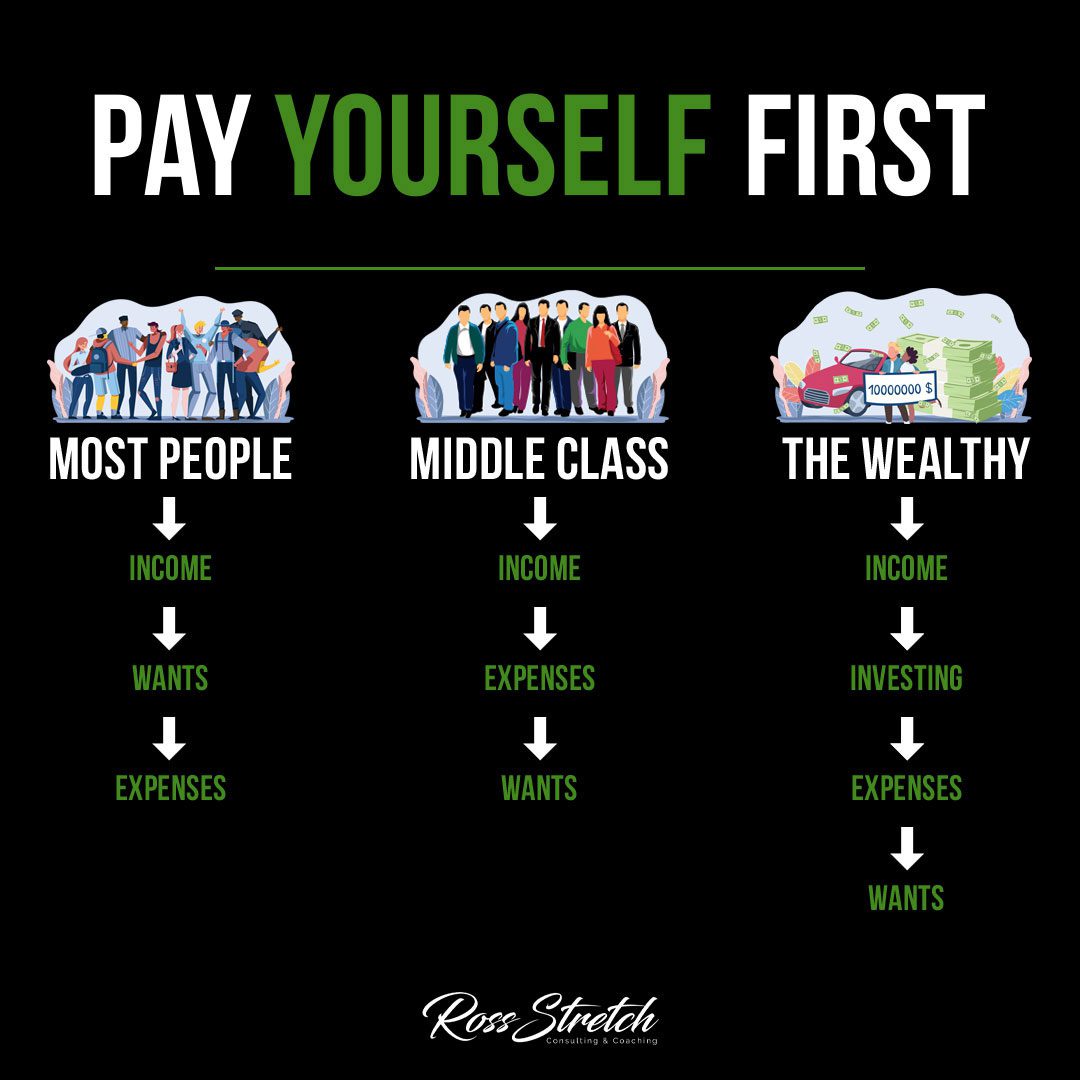Introduction
Financial prosperity is often shaped by habits and mindsets toward money management. A critical strategy embraced by the wealthy is the principle of “Pay Yourself First.” This infographic illustrates the stark contrast in financial approaches across different economic classes and underscores the importance of this method in wealth accumulation.
It requires discipline, a long-term outlook, and a commitment to putting your future financial well-being ahead of immediate gratification.
Ross Stretch
Understanding “Pay Yourself First”
The concept of “Pay Yourself First” is simple yet profound: before paying bills, buying groceries, or spending on entertainment, you set aside a portion of your income for savings or investments. It’s a strategy that ensures savings growth, promotes financial discipline, and helps build a buffer for the future.
The Financial Habits of Most People
The typical financial behavior involves earning an income, succumbing to wants, and then managing expenses with what’s left. This approach often leads to little or no savings and a paycheck-to-paycheck lifestyle, hindering wealth accumulation and financial security.
The Middle-Class Approach
The middle class tends to earn an income, manage expenses, and then cater to wants. While more disciplined than the former, this approach still prioritizes immediate needs and desires over long-term financial growth.
The Wealthy’s Investment-First Mindset
The wealthy flip the script by earning an income, investing a portion, and then managing expenses and wants with the remainder. This prioritization of investment ensures that wealth is being built and compounded with each paycheck.
The Power of Compounding
One of the reasons the “Pay Yourself First” strategy is so effective is due to the power of compounding interest. By consistently investing, the wealthy ensure that their money is not just sitting idly but growing over time, benefiting from both the returns on the original investment and the returns on those returns.
Creating a Sustainable Budget
Implementing the “Pay Yourself First” strategy requires a sustainable budget that accounts for investment as a non-negotiable expense. This involves living within or below one’s means and cutting unnecessary expenses to prioritize financial growth.
Automating Your Savings
Automation is a key tool in this strategy. By setting up automatic transfers to savings accounts or investment funds, you remove the temptation to skip or reduce the amount you pay yourself each month.
Diversifying Your Investments
Diversification is another cornerstone of the wealthy’s approach. By spreading investments across different assets, they not only manage risk but also create multiple channels for income and growth.
Conclusion
Adopting the “Pay Yourself First” philosophy is a critical step toward financial freedom and wealth. It requires discipline, a long-term outlook, and a commitment to putting your future financial well-being ahead of immediate gratification. By embracing this approach, you can transform your financial trajectory and move towards a more secure and prosperous future.


